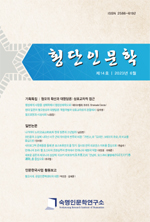나가야마 노리오(永山則夫)와 현대 일본의 소년범죄
Norio Nagama and Juvenile Crime in Modern Japan
- 숙명여자대학교 인문학연구소
- 횡단인문학
- 제14호
-
2023.0685 - 108 (24 pages)
-
DOI : 10.37123/th.2023.14.85
- 68

나가야마 노리오는 1968년 연속살인사건의 소년 범죄자이다. 나가야마의 생애와 작품은 1960-70년대 사회의 저변을 보여주는 접점으로 평가되기도 했다. 다만 그의 연구는 각각의 영역에서 개별적으로 진행되었으며, 소년범죄를 둘러싼 문제의식이 옅었고 현재와의 비교 역시 찾을 수 없다. 이에 본고는 나가야마 사건을 소년범죄를 중심으로 여러 학문적 문제의식을 고찰하는 것을 목표로 하였다. 첫째, 법적 영향으로는 ‘나가야마 기준’과 같은 소년 사형 선택 기준이 세워지며 소년범죄의 엄벌주의와 소년법, 사형 문제가 일찍이 논의되었다는 사실을 검토하였다. 둘째, 나가야마의 작품은 당대 소년범죄의 사회적 배경을 알 수 있는 의미 있는 기록이었다. 이에 일본은 소년 범죄자의 수기에서 범죄의 원인을 찾을 수 있다는 것을 학습하였다. 그 결과 2016년 『절가』와 같은 실수를 범하기도 하였으나, 소년범죄의 여러 원인을 수기 혹은 글을 통해 분석하고 발신하는 고민의 장을 마련하는 것의 중요성을 알 수 있었다. 이는 그의 소설에서도 찾을 수 있다. 나가야마는 현대 사회의 소년범죄와도 여전히 연결된다는 점에서 현대 소년범죄를 분석하는 자료로서의 의미도 획득할 수 있다.
Norio Nagayama was a 19-year-old serial killer in 1968 in Japan. Nagayama’s life and works were also evaluated as a contact point for showing the lowest classes in the 1960s and 1970s. In this article, I will progress a comprehensive study of various academic issues by focusing on juvenile crime. Also, examine how he influenced Japan’s current view on juvenile crime and find out the possibility of modern interpretation. First, as for the legal impact, established the criteria for choosing a juvenile death penalty, such as the ‘Nagayama Standard,’ informs that the argument of severe punishment of juvenile crimes, and death penalty issues were reviewed early in Japan. Second, Nagayama’s notes led to an apology for the victim’s family without showing off the crime itself. Accordingly, Japan learned that the cause of crime can be found in the (non)fictions of juvenile criminals. It confirmed that it is important to set up a place for thinking about analyzing and transmitting various causes of juvenile crimes through non-fictions or literary works. Finally, Nagayama’s novels were meaningful as a realisㄴtic work and record to find the cause of a juvnile’s crime.
1. 서론
2. 법적 영향
3. 사회적 영향
4. 문학적 영향
5. 결론
참고문헌
(0)
(0)